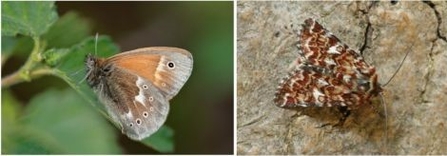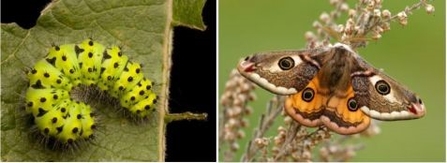By Anthony McCluskey, Butterfly Conservation Scotland.
At Butterfly Conservation we understand the great value of healthy functioning peatlands for biodiversity. While much of the focus is on the specialised plants found on peat bogs, there are a number of butterflies and moths which are associated with bogs too. Some of them are there because their caterpillar foodplants only grow on bogs; the caterpillars of the Large Heath butterfly Coenonympha tullia, for example, feed almost exclusively on Hare’s-tail Cottongrass (Eriophorum vaginatum). This butterfly is now only found in the north and west of the UK and Ireland, with our data showing a 58% contraction in range since the mid-1970s.


